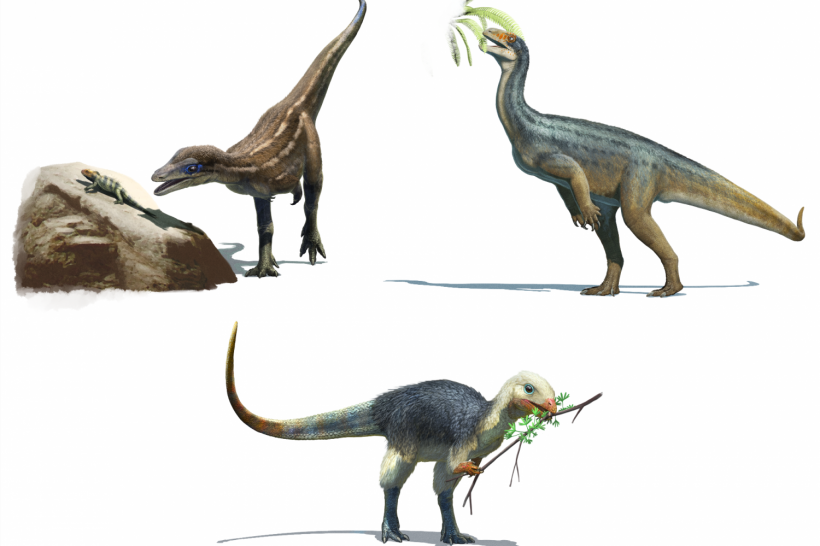Scientists from the University of Bristol have used computational modeling to study the teeth of the earliest dinosaurs and compare them to the teeth of living reptiles. They found that many plant-eating dinosaurs had omnivorous ancestors and that the ancestors of famous long-necked herbivores, such as Diplodocus, ate meat.
This ability to have diverse diets may have contributed to the success of these dinosaurs. The early history of dinosaurs is not well understood, but it is thought that they were small and overshadowed by crocodile-like reptiles during the Triassic period.
It is unclear what their diets and ecological roles were, but it is believed that something happened during the Triassic that allowed dinosaurs to survive the mass extinction and become the dominant group for the rest of the Mesozoic era. The analysis of the study was presented in the online journal, Science Advances.
Dinosaurs Teeth: Displaying Diversified Diets
Dr. Antonio Ballell, the lead author of the study from the University of Bristol, mentioned that, shortly after their origin, dinosaurs displayed a diverse range of skull and tooth shapes. This diversity has led paleontologists to speculate that different species of dinosaurs were already exploring different kinds of diets. These scientists have compared the teeth of dinosaurs to those of modern lizard species to infer what they may have eaten based on similarities in their teeth.
The researchers conducted their study by using computational methods to examine the shape and function of the teeth of early dinosaurs and compare them to living reptiles that have different diets. This involved creating mathematical models of the tooth shapes and using engineering software to simulate how the teeth would respond to biting forces. This allowed the researchers to understand more about the diet and behavior of the early dinosaurs.
Professor Mike Benton, a co-author of the study, stated that by using these methods, the researchers were able to numerically quantify the similarities between early dinosaurs and modern animals, providing solid evidence for their inferences about the dinosaurs' diets. Theropod dinosaurs had pointy, curved, and blade-like teeth with tiny serrations, which behaved similarly to those of modern monitor lizards. In contrast, the denticulated teeth of ornithischians and sauropodomorphs were more similar to those of modern omnivores and herbivores, like iguanas.

Early dinosaurs and their diets. Lesothosaurus is an omnivore, Buriolestes is a carnivore and Thecodontosaurus is an herbivore
Contradicting Traditional Hypotheses
The study also utilized machine learning models to classify the earliest dinosaurs into different diet categories based on their tooth shape and mechanics. For example, Thecodontosaurus, a dinosaur discovered in Bristol, had teeth that were well-adapted to a plant-based diet. This innovative approach allowed the researchers to gain further insights into the diet and behavior of these early dinosaurs.
Professor Emily Rayfield, a senior co-author of the study, believed that the researchers' analyses showed that ornithischians, a group that includes many plant-eating species such as horned dinosaurs, armored ankylosaurus, and duck-billed dinosaurs, originally had an omnivorous diet. Another interesting finding was that the earliest sauropodomorphs, ancestors of the long-necked sauropods like Diplodocus that were herbivores, were carnivores. This indicates that herbivory was not ancestral for either of these two lineages, contradicting traditional hypotheses and that the diets of early dinosaurs were quite diverse.
Dr. Ballell concluded that the diversity of diets among the first dinosaurs may have contributed to their evolutionary and ecological success. He noted that dinosaurs dominated the land during the Mesozoic era until their extinction 66 million years ago and included both herbivorous groups like long-necked sauropods and carnivorous species like Tyrannosaurus rex and its relatives. However, their origins can be traced back to the Triassic period, with the first definitive dinosaurs appearing approximately 235 million years ago.
RELATED ARTICLE: Alvarezsaurus Dinosaur Shrank from Large Turkey to Chicken Size 100 Million Years Ago Due to Termite Diet
Check out more news and information on Paleontology in Science Times.




![Earth's Quasi-Moon Kamo‘oalewa Could Originate From Lunar Surface Not Asteroid Belt [Study]](https://1721181113.rsc.cdn77.org/data/thumbs/full/53275/89/56/50/40/earths-quasi-moon-kamo-oalewa-could-originate-from-lunar-surface-not-asteroid-belt-study.png)









